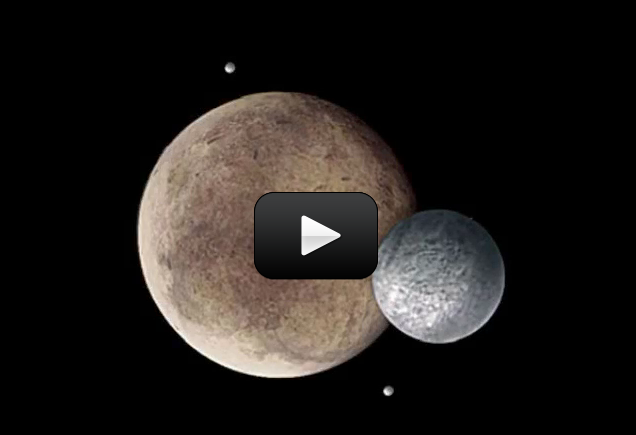A binary system exists when objects approach each other in size (and gravitational fields), the common point they rotate around (called the center of mass) lies outside both objects and they orbit around each other. Astronomers have found binary planets, binary stars, and even binary black holes.
The path of a planet around the Sun is due to the gravitational attraction between the Sun and the planet. This is true for the path of the Moon around the Earth, and Titan around Saturn, and the rest of the planets that have an orbiting moon.
Materials
- Soup cans or plastic containers with holes punched (like plastic yogurt containers, butter tubs, etc.)
- String
- Water
- Sand
- Rocks
- Pebbles
- Baking soda
- Vinegar


Try filling a balloon with it (use a water bottle, put baking soda in an un-inflated balloon, vinegar in the bottle, and when you’re ready, tip the balloon upright so the baking soda falls into the vinegar. You’ll be able to catch the CO2 generated and you can compare it with a regular air-filled balloon!
Woah! That’s really cool how you can pour carbon dioxide into the container!Does the container get heavier at all? Can you make more carbon dioxide in a larger container and put it into a smaller one so it becomes heavier? Thanks, Sasha.
It has to do with the density of the gas. Helium is “lighter than air” so if you have a “cloud of helium” you’ll find it will rise above the air layer, much like a block of ice rises to the top your glass of water. The ice is less dense than the liquid water, the same way that helium is less dense that the surrounding air. Carbon dioxide is MORE dense, so it will sink below air, and when it does this, it collects at the bottom of your container and yes, you really can “pour” it out. I would recommend trying this with a gas you can see, like fog from a fog machine or something similar!
I am confused about the carbon dioxide. A gas diffuses quickly. Can you really “pour” carbon dioxide into the other can.
Gravity! Gravity is the force that keeps our universe together and holds the planets around the Sun. It also keeps the moons in orbit around the planets that have moons.
Is the sun the centripetal force of the solar system? What keeps the solar system in place?
Oops – sorry about that! I’ll get it fixed right away!
I can’t get the student worksheet & Exercises to load up. Every other experiment has allowed me to access that section, but not the Binary Planet Systems Experiment.